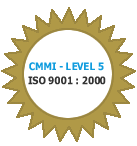



Claim Analytics, the success key to health insurance business.
- A Case Study
Industry
Indian Health Insurance Industry
Overview: Risk-based Underwriting of Health Insurance Policies
Underwriting a risk such as health insurance needs careful assessment of risk and collecting the appropriate premium for covering the risk. Underwriting individual policies are easier than group policies for two reasons. Assessment of risk for individuals is much quicker and better as the beneficiaries covered is far few than group. Individual policies also exclude coverage of many known risks - such as pre-existing conditions, coverage for specific treatments, etc.
An efficient way to assess the risk of groups, especially large groups is critical to good underwriting, leading to better risk management and profitability for insurance companies.
Situation
Group mediclaim policies are usually loss making, in India. First, the premium collected at the time of underwriting does not accurately reflect the risk covered and secondly the quality of claims information is not good enough to assess the risk.
Typical drivers of premium amounts have been rough yardsticks or market pressure. Yardsticks such as premium per individual, or per family are common. A multiple of this based on the number of members in the group is used. Sometimes competitive pricing is used. Often previous years claim is used as a benchmark. Today with employee turnover being among the highest ever and some companies experiencing high growth, past years claims data is a poor indicator of risk covered. The groups' risk characteristics may significantly change.
Solution
IndiaVima, an online collaborative platform for insurance companies, TPAs, insured and brokers, has a risk-based premium rating engine. IndiaVima solves the lack of standardization of beneficiary data format, by defining a standardized representation of beneficiary data and also the policy parameters - sum insured, exclusions, subgroups, sub-limits, and buffer amount.
With the beneficiary data representation standardized, it is easy for the insured to send the beneficiary information to insurance companies through IndiaVima. The data is analyzed and presented to insurance companies for underwriting. The analyses and distribution of data by gender, age group, family sizes, and claims analytics, help insurance companies to more accurately assess the risk of the group.
The premium rating engine in IndiaVima allows the insurance company to arrive at a risk-based premium involving loading and discounting to be applied to the specific group. The benefit of IndiaVima is that loading and discounting is applied based on the risk characteristics of a specific group and families in the group. The rating engine seamlessly allows the insurance companies to use multiple premium rate tables for different risk categories and multiple criteria for computing the premium. By automating the risk-based premium rating process, IndiaVima allows the insurance companies to underwrite group policies with better understanding of risk and in a short time.
Benefits
Functionality highlights include:
- Better assessment of risk being covered. Premium computation based on risk covered.
- Able to use multiple criteria and multiple rate tables to compute premium instantaneously, even for large groups.
- Online nature of IndiaVima provides better access and transparency in
- Underwriting for the reporting offices. They are able to manage risk-based underwriting much better.
- Risk-based premium calculation can yield better control on claims ratio and profitability of mediclaim insurance.
IndiaVima - at a glance
 Stakeholder Stakeholder |
 Features Features |
RFQ (Request for Quotation) |
|
| Response to online RFP (Request for proposal) |
|
| Highly versatile Premium Calculator |
|
| Online transfer of beneficiary info from Employer |
|
| Reports & Audits |
|
| Claim-Analytics |
|
| Issue of TPA cards |
|